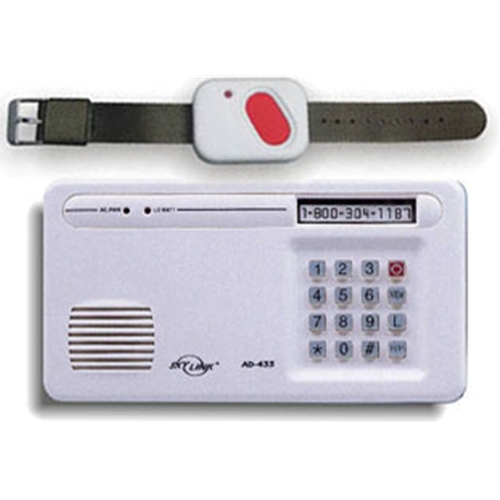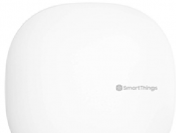 If you are a caregiver to an independent senior who lives alone, a personal alert system will provide your loved one with an easy way to contact family or neighbors in the event of a fall or other emergency. With just the of a push a button, help from a relative or friend will be on the way. For a one-time purchase price as low as $115.00, a personal alert system gives self-sufficient seniors the sense of security they’d get with a professional security monitoring service, without the monthly fees.
If you are a caregiver to an independent senior who lives alone, a personal alert system will provide your loved one with an easy way to contact family or neighbors in the event of a fall or other emergency. With just the of a push a button, help from a relative or friend will be on the way. For a one-time purchase price as low as $115.00, a personal alert system gives self-sufficient seniors the sense of security they’d get with a professional security monitoring service, without the monthly fees.
How a personal alert system works
A typical personal alert system consists of two components:Â a panic alert transmitter and a base station. The base station is connected to a telephone line and linked wirelessly to the panic alert transmitter. When the user pushes the panic button on their pendant or wristband, the base station automatically dials out for help.
The panic alert transmitter can be worn around the wrist or around the neck on a lanyard. Both wristband and pendant styles are waterproof and feature a large button that the user pushes to summon for help in the event of an emergency. Since accidents are unpredictable, the panic alert transmitter should be worn at all times, even during bathing.
 Once activated, the base station repeatedly calls the emergency phone numbers you program in for family, neighbors or friends who are able to respond to an emergency call. If no one answers, the dialer automatically calls the next preprogrammed phone number until a live person responds. The number of phone numbers and calling cycles varies by model. The Skylink Panic Alert System with Dialer, for example, will dial up to 9 emergency phone numbers up to 9 times each.
Once activated, the base station repeatedly calls the emergency phone numbers you program in for family, neighbors or friends who are able to respond to an emergency call. If no one answers, the dialer automatically calls the next preprogrammed phone number until a live person responds. The number of phone numbers and calling cycles varies by model. The Skylink Panic Alert System with Dialer, for example, will dial up to 9 emergency phone numbers up to 9 times each.
How does a personal alert system differ from a medical alert alarm?
A personal alert system is designed for self-sufficient seniors who want to live more independent, active lives at home by providing them with a mechanism to call family or friends for help if an unexpected event like a fall prevents them from getting to the phone. A medical alert alarm system, which also uses a panic transmitter and base station, is designed primarily for seniors with chronic health issues who don’t have a reliable network of trusted family or friends living nearby. Instead of calling a programmed list of relatives or neighbors when the panic button is activated, the medical alert alarm dialer contacts a professional monitoring center that’s manned by trained service personnel. Medical alert alarm systems are typically leased for a monthly fee of around $20 to $50, which covers equipment rental and a call center monitoring service, and many require long-term contracts.
Special features
 Some personal alert systems, like the Amplicom PowerTel 580, have a base station that doubles as a senior-friendly telephone with large, easy-to-read buttons, amplified volume and a built-in answering machine. Another very desirable feature is a two-way speakerphone that allows users to talk and listen to their emergency responder. Speakerphones are available on certain models, including the Geemarc Ampli600 Amplified Emergency Connect Phone.
Some personal alert systems, like the Amplicom PowerTel 580, have a base station that doubles as a senior-friendly telephone with large, easy-to-read buttons, amplified volume and a built-in answering machine. Another very desirable feature is a two-way speakerphone that allows users to talk and listen to their emergency responder. Speakerphones are available on certain models, including the Geemarc Ampli600 Amplified Emergency Connect Phone.
Peace-of-mind for everyone
For independent seniors and their caregivers, the biggest benefit of a personal alert system is the peace-of-mind that comes with knowing that help from family and friends is only a pushbutton away. Not only are stand-alone personal alert systems very easy to install, they are considerably less expensive over the long run than a medical alert alarm that is leased and answered by an outside monitoring center.






Phil Hargraves
I am looking for something similar to the personal alert system, Geemarc Ampli600 amplified emergency connect phone, except something that would first alert someone within the home of the person requiring help (in an other room) without having a second phone line and then transfer to an outside number if required. It would also have to have a wrist band push button to activate the alert. Do you have anything like this? I would appreciate a response!
Phil